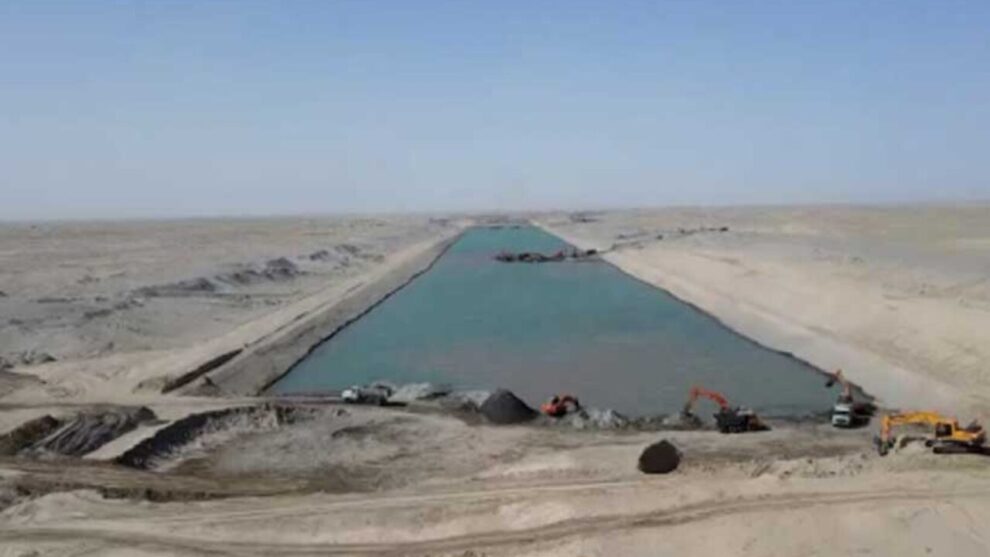In the post-Soviet era, Central Asia experienced a pronounced upsurge in geopolitical tensions, significantly shifting the focus toward the pressing matter of the water conflict between Uzbekistan and Afghanistan. At the crux of this contentious issue lies the Amu Darya River, a pivotal water resource shared by both nations, thereby engendering profound environmental and geopolitical ramifications. The origins of this protracted conflict can be traced back to the historical legacy of centralized water management during the Soviet period, which resulted in disproportionate repercussions for downstream countries. The subsequent emergence of independent nations following the Soviet Union’s dissolution further complicated the situation as each sought to assert sovereignty over water resources, exacerbating existing complexities. The intricate nature of the dispute is compounded by the shrinking of the Aral Sea, divergent irrigation practices, and conflicting plans for hydropower development. These multifaceted factors underscore the urgent imperative to seek a resolution and necessitate heightened international collaboration and diplomatic endeavors between Afghanistan and Central Asian countries.
The Amu Darya, the longest river in Central Asia, originates from the Hindu Kush and Wakhan regions in the Pamir Highlands of Afghanistan. Spanning an impressive 2,540 kilometers, it courses its way to the Aral Sea, traversing through Tajikistan, Turkmenistan, and Uzbekistan before finally reaching its destination. The section of the Amu Darya Basin above its confluence with the Pamir River is known as Panj. The Panj River meets with the Vakhsh River, which originates in Kyrgyzstan’s Alai region, to form the Amu Darya.
Running along the northern borders of Afghanistan and its neighboring countries, the Amu Darya stretches approximately 1800 kilometers from Zor-Kul to Khamaab. This river serves as a vital water source for agriculture in the region, especially in Afghanistan. It’s estimated that around 6 million hectares of land in total are irrigated by the Amu Darya. Of this, Afghanistan upstream utilizes 1.15 million hectares for agriculture. Downstream, Turkmenistan holds the largest irrigation territory, using the waters of the Amu Darya to irrigate 1.7 million hectares of land, followed by Uzbekistan with 2.3 million hectares. While the Amu Darya plays a crucial role in providing water for agricultural purposes, its drainage varies among the countries it flows through. In Tajikistan, the river drains approximately 0.5 million hectares of land upstream, whereas, in the Kyrgyz Republic, this figure is significantly lower, at just 0.1 million hectares. Overall, the Amu Darya stands as a lifeline for the region, supporting livelihoods and economic activities through its extensive network of irrigation and contributing significantly to the prosperity of Afghanistan and its neighboring nations.
The water distribution from the Amu Darya River, stemming from regulations during the Soviet era, primarily focuses on meeting agricultural demands. A crucial development in this regard was the ratification of Protocol 566 by the former USSR, which outlined the allocation of water among the four Central Asian Republics (Tajikistan, Uzbekistan, Turkmenistan, and the Kyrgyz Republic). Following their independence in 1991, these republics signed a subsequent agreement known as the Almaty Agreement, which retained the water allocation quotas specified in Protocol 566. To manage the Amu Darya and the Syr Darya rivers, the Central Asian Republics (CARs) established several organizations and institutions.
However, it’s important to highlight that Afghanistan was not part of these regional agreements at that time. The exclusion of Afghanistan from these agreements posed a challenge to achieving comprehensive water management in the region, given its significant stake in the Amu Darya basin. As a vital stakeholder, Afghanistan’s involvement in water allocation and management decisions is crucial for ensuring equitable and sustainable water usage across the region. On March 30, 2022, Mulla Abdul Ghani Baradar, the deputy prime minister of the current Afghan government, made an official announcement regarding the commencement of the Qosh Tepeh Canal’s construction. The Qosh Tepa canal is being built in Balkh province and will draw water from the Amu Darya. The construction of the canal is planned to be carried out in three phases, spanning a period of five years. Covering a distance of 285 kilometers, the canal will have a width of 152 meters and a depth of 8.5 meters.
As Afghanistan embarks on developing the Qosh Tepeh Canal to enhance its water infrastructure, concerns arise not only about the potential impacts on the country’s water supply and irrigation but also about the implications for neighboring countries that rely on the waters of the Amu Darya River. The project’s scale and its potential effects on regional water flow and availability are areas of particular attention for both Afghanistan and its neighboring nations, as they strive to strike a balance between their development needs and the responsible management of shared water resources.
The Taliban has set forth a plan to transform an extensive 550,000 hectares of arid desert into fertile farmland to address the pressing need for agricultural resources in Afghanistan. Currently, Kabul receives a significant 7 cubic kilometers of water from the Amu Darya basin, but they aspire to increase this amount to a total of 17 cubic kilometers. However, this ambition comes with potential consequences for neighboring countries, particularly Uzbekistan, whose water supply is predicted to decrease by around 10% to 15%. While Tajikistan may not experience a substantial impact on its primary water source, the implications for Uzbekistan and Turkmenistan are undeniable. In a worst-case scenario, the lower regions of the river, such as Karakalpakstan and Khorezm, could face severe hardships.
Uzbekistan’s water availability is already diminishing due to the combined pressures of climate change and widespread drought, resulting in an unfortunate 15% water loss. If the proposed canal exacerbates this situation, Uzbekistan might encounter an additional 10% reduction, leading to a concerning total loss of 25% of their water resources. As such, the project’s potential consequences raise serious concerns about the delicate balance of water resources in the region and the need for careful consideration and collaboration among all stakeholders to ensure sustainable water management.
Although Afghanistan has made rapid progress in creating the canal, Uzbekistan and Turkmenistan have decided to keep silent about it and have not yet made any public statements. A group from Uzbekistan visited Afghanistan on March 22, 2023, with the aim to discuss problems pertaining to the two countries’ economic relationship. The “Trans-Afghan project,” which includes building the Termez-Mazar-i-Sharif-Kabul-Peshawar railroad and installing an electrical line along the Surkhan-Puli Khumri route, was at the center of the negotiations. Although the Uzbek Ministry of Foreign Affairs released a formal statement noting the negotiations discussing collaboration in the water-related and energy industries, no specific comments regarding the building of the canal were mentioned in the official statement.
Consequently, Uzbekistan wishes to keep its interactions with the Taliban peaceful for the time being. However, Farkhod Tolipov, a political analyst based in Tashkent, warned in the Eurasianet that if a dangerous scenario emerged in relation to the canal’s development, Uzbekistan would undoubtedly defend its national objectives. Furthermore, The World Bank has stated that if no action takes place, severe droughts and storms in Central Asia are predicted to cause economic losses of up to 1.3 percent of its gross domestic product annually, while the yields of crops are anticipated to decline by 30 percent by 2050, resulting in approximately 5.1 million climate migrants by that point in time.
It’s important to keep in mind that geopolitical dynamics may be complicated and that nations frequently take into account a variety of considerations when determining how to react to developments in their region. It is possible to understand Uzbekistan’s negligent attitude toward the construction of the Qosha Tepa Channel in Afghanistan by carefully examining the many factors that influence the country’s actions. Diplomatic, geopolitical, and domestic issues are among the numerous variables that influence Uzbekistan’s attitude toward this cross-border development project and are interconnected with one another.
Amid a widespread consensus among experts about the paramount importance of water as a crucial resource for the future, there is growing concern and speculation about its potential use as a potent political tool. An alarming report from the reputable “Global Water Intelligence” magazine underscores the significance of water in today’s world by revealing that the financial gains within the water market over a single year can rival the staggering sums allocated to military expenses. As global water scarcity and competition for this finite resource intensify, countries with abundant water resources, like Uzbekistan, find themselves increasingly cognizant of the geopolitical implications and potential vulnerabilities surrounding water management.
Additionally, complaints about infrastructure and water supplies are only two examples of international problems that are best handled through diplomatic channels. To prevent worsening relations with Afghanistan, Uzbekistan may decide without making a public statement about the development of the Qosha Tepa Channel. As a result, they may favor undercover diplomacy to have a productive conversation with Afghan officials. Uzbekistan can express its worries about potential effects on shared water supplies, environmental effects, and any violations of earlier agreements about water consumption and administration through diplomatic measures. Maintaining diplomatic channels may promote goodwill and develop an environment favorable to conflict settlement.
Furthermore, given the intricate geopolitical landscape and delicate inter-state relations in Central Asia, Uzbekistan finds itself treading a careful and nuanced path to ensure that its response to the construction of the Qosha Tepa Channel in Afghanistan does not inadvertently give rise to perceptions of interference in Afghanistan’s internal affairs. Uzbekistan is keenly aware that any misstep or overly assertive reaction could potentially strain diplomatic relations and undermine the fragile equilibrium in the region. Striking a delicate balance between voicing justifiable concerns about the channel’s implications and upholding Afghanistan’s sovereignty and independence becomes paramount for Uzbekistan’s foreign policy objectives in the context of regional peace and cooperation initiatives.
Another assumption in the context of the situation might be the fact that the country must carefully assess the significance of the Qosha Tepa Channel project in comparison to its ongoing domestic issues to determine the order in which national objectives should take precedence, as Uzbekistan faces lots of pressing challenges and national priorities. Although the project’s potential effects should not be discounted seriously, Uzbekistan may give priority to domestic infrastructure, welfare programs, and economic development initiatives that directly benefit its inhabitants. For sustaining internal equilibrium and taking care of critical requirements within its own boundaries, this practical approach is crucial.
In conclusion, the fate of Central Asia and its water resources lies in the hands of its nations, united in their pursuit of sustainable cooperation. By engaging in comprehensive discussions that transcend borders and political boundaries, Central Asian countries, including Afghanistan, can demonstrate their commitment to a shared vision of prosperity and harmony. Embracing the principles of transparency, fairness, and equitable water management, they can unleash the true potential of these vital waterways, transforming them from potential flashpoints into enduring symbols of regional unity. This transformative endeavor is a testament to the power of collaboration as Central Asia forges ahead, hand in hand, towards a future where water resources flow not as causes of discord but as conduits of shared progress and prosperity for generations to come.
Source: Modern Diplomacy















